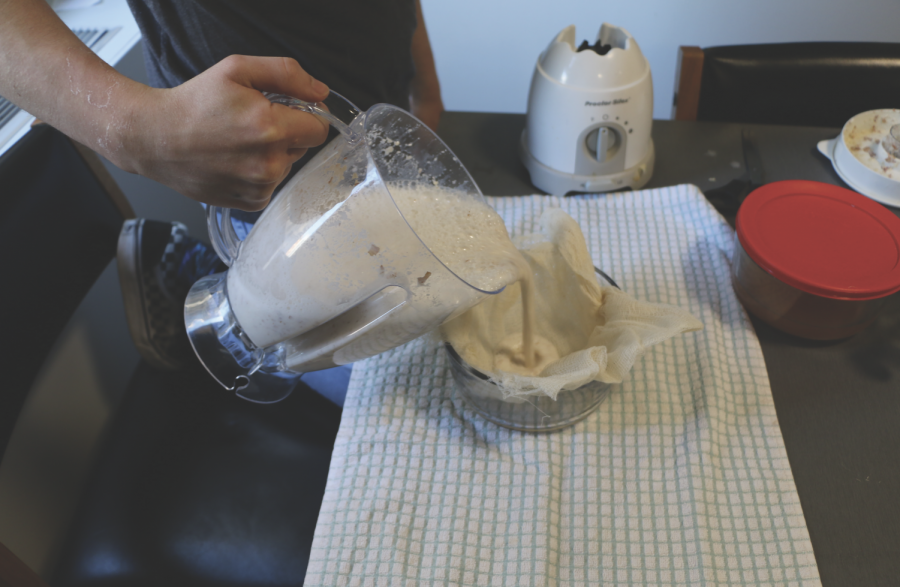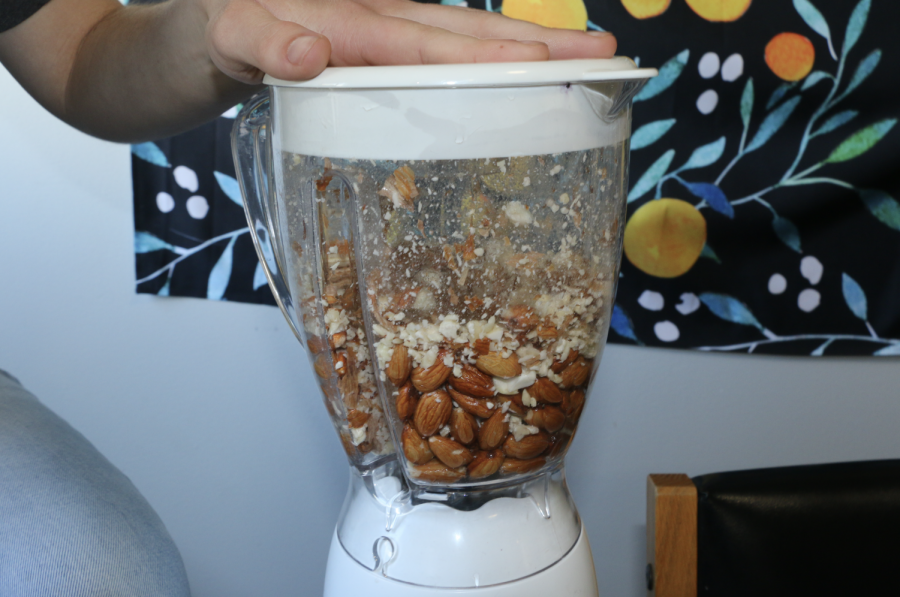Dairy Is Out: How To Make Your Own Almond Milk or Oat Milk
April 9, 2019
Oat Milk Recipe:
2 cups of rolled oats
2 cups of water
1 tablespoon of honey
Makes about 3 cups of oat milk
Almond Milk Recipe:
1 cup of almonds
3 cups of water
1 tablespoon of honey
1 dash of salt
Makes about 3 cups of almond milk
People are increasingly turning away from milk for environmental and health reasons, not to mention taste. In regard to health, cow milk contains saturated fatty acids, which can be associated with increased cholesterol and heart disease. Plant-derived milk alternatives, however, contain unsaturated and monounsaturated fatty acids, which don’t come with the same health risks as their saturated counterparts.
Nevertheless, there are pros and cons to every set of alternatives. For plant-derived milk, what you lose in saturated fatty acids, you also lose in protein. According to the United States Department of Agriculture, the average cup of 2% milk contains about eight grams of protein, whereas the average cup of oat milk contains only three grams and the average cup of almond milk contains just one gram.
The most important health difference between milk and plant-based alternatives is the lactose. Plant-based alternatives do not contain lactose, so they are safe to drink for lactose intolerant individuals.
Beyond health, you may be interested in drinking milk alternatives for environmental and ethical reasons. According to the Environmental Protection Agency, around 3.6% of total greenhouse emissions come from livestock, so reducing your milk consumption may have a positive impact on the environment.
For whatever reason that pushes you towards milk alternatives, here is how to make them.
You will need cheesecloth and access to a blender for both almond and oat milk. Whole Foods sells cheesecloth for under five dollars, and I highly recommend it for almond milk, but you can use a simple metal strainer for the oat milk. The benefits of cheesecloth are that it’s reusable and biodegradable. You can also use coffee filters, but they aren’t as porous as cheesecloth, so you may have to wait longer during the straining process.
Either way, scoop a cup of almonds into a bowl and pour water into the bowl, submerging all of them. They need to soak for at least four hours in the fridge. Then, pour all of your almonds into the blender and blend them until you have a consistency close to a puree. At this point, add three cups of water, salt and honey and blend again until the mixture appears smooth.

Cut a piece of cheesecloth out that will be able to line a large cup or bowl. Place the cheesecloth in the bowl and pour your almond mixture over the cheesecloth. With your empty almond milk receptacle nearby, carefully lift the cheesecloth out of the bowl and over your receptacle and gently squeeze. You will have to pinch the top of the cheesecloth to prevent almond bits from gushing out of the opening while you squeeze. Once you have strained all of your almond milk, you can throw away the almond bits or save them for future use in a smoothie. Set aside your almond milk to cool in the fridge, but make sure to consume it within 24 hours.
Oat milk takes a slightly more nuanced process. You can use a one-to-one ratio of oats and water because rolled oats are quite absorbent when you set them aside to soak. Because of that, you only need to set aside your oats to soak for about 45 minutes.
Again, scoop your soaked oats into a blender and mix until no chunks are present. Then add your water and honey and blend until milky smooth.
Here’s the difference: you will need a metal strainer and a piece of cheesecloth. Alone, cheesecloth can do the job, but it will take more time. Instead, take a metal strainer and place it over a receptacle for your oat milk. Line the strainer with cheesecloth and pour in your oat mixture. Using a spoon or a ladle, pat down the blended oats against the strainer to force the milk out of the mixture. Once you have collected all your milk, set it aside to cool and consume within 24 hours.
You can drink your almond or oat milk plain, blend it into a smoothie or pour it over your cereal. Do not let my recipe limit yours; feel free to personalize your almond milk or oat milk with fruits, agave or other ingredients. For whatever reason you decide to try a milk alternative, fresher is always better, so try making it yourself.














Cynthia • Mar 18, 2021 at 3:38 pm
Yummy and thank you!!!